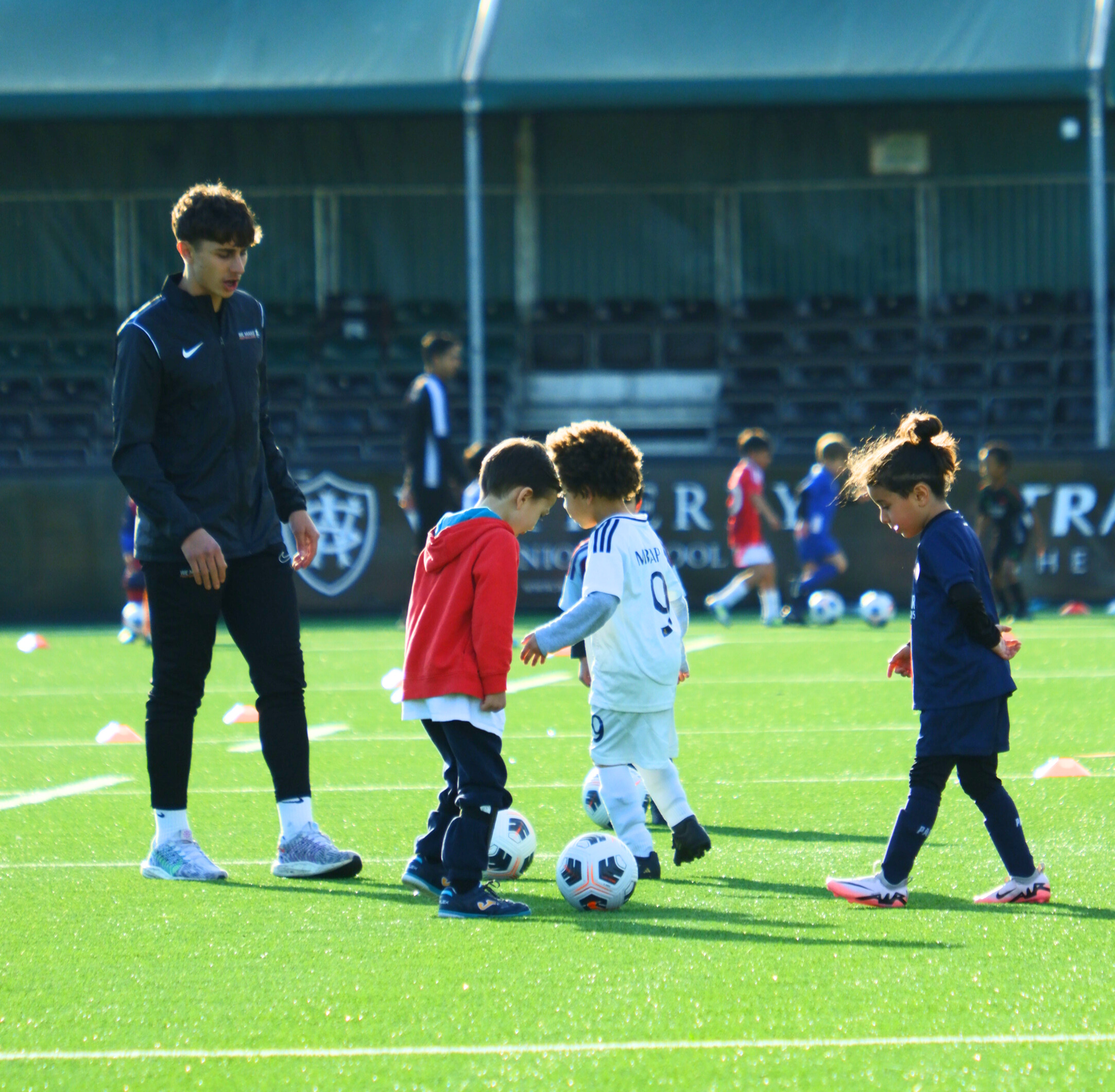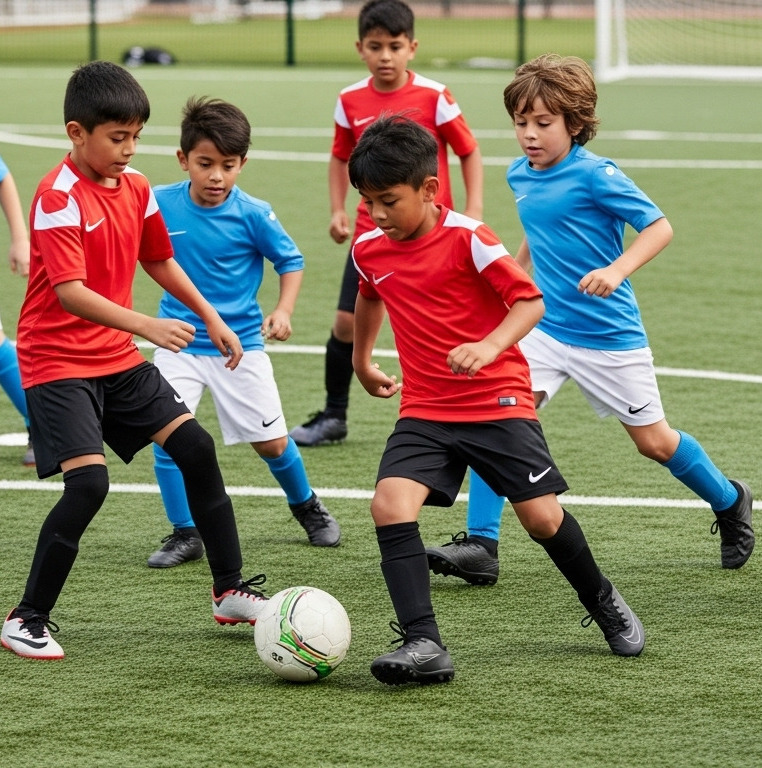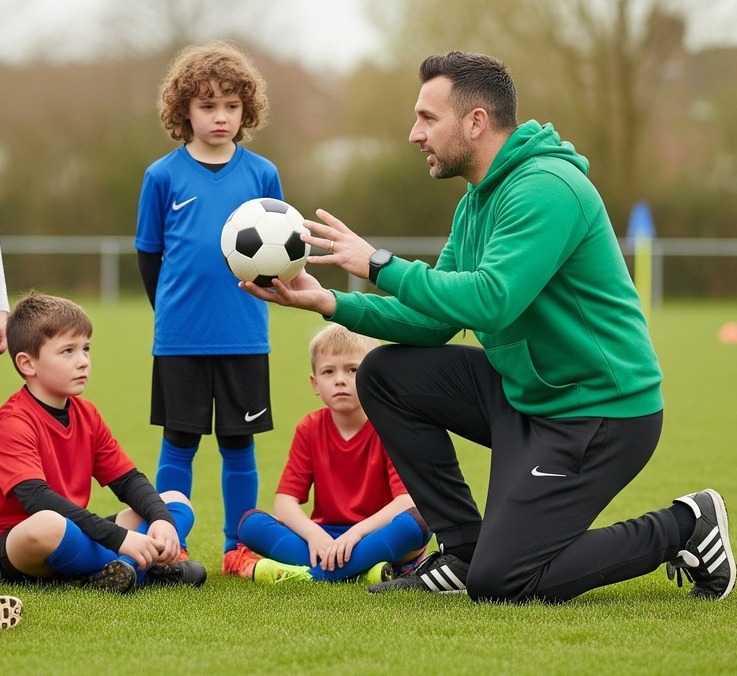Beginner Football Drills for Ball Control & Mastery
Ball possession and ball control drills are important for improving a soccer player's coordination and confidence in possession of the ball. These drills focus on developing ball control, quick feet and the ability to manipulate the ball under pressure. Below is a list of effective ball mastery exercises, with descriptions and tips on how to perform them. They are perfect for children and players who are beginning to learn the techniques of the soccer game.
Ball Control Drills In Football
Exercise #1: Right foot is on the ball. Control the ball by foot from heel to toe. Repeat the exercise with the left foot. During this exercise, the ball is in front of the child. The foot that controls the ball does not come off. Keep the balance. Repeat 10 times. You may add displacement.
Exercise #2: Right foot on the ball. Control the ball with the foot to the right, to the left. The ball has to be in front of the child. The foot that controls the ball does not come off. Repeat 10 times.
Exercise #3: Right foot on the ball. Control the ball with the foot, circular movements to the right, left. Perform a similar exercise with the left foot. Repeat up to 10 times. The foot that controls the ball does not take away. Keep the balance. You may add displacement.
Exercise #4: The child's right foot is on the ball. Controlling the ball with the foot, draw numbers: 0, 1, 2, 3, 4....9 . Perform similar tasks with the left foot. Keep the balance. The foot that controls the ball does not take away. May perform a similar exercise, but drawing geometric figures: square, triangle, rectangle, circle.
Exercise #5: The children get into pairs. They hold hands. One ball per pair. Children move around, controlling the ball in pairs. Keep the hands together. You may add shots on goal.
Here we showed just 5 elementary exercises for beginners. To get more skills, We Make Footballers offers fun football training sessions with professional coaches.

Ball Mastery
Ball mastery is a set of skills that makes the football game more efficient and exciting. This is the ability of a football player to control the ball quickly, accurately and confidently during a game, including receiving the ball, keeping it under control, rounding opponents and passing it. This skill is the basis for many other actions, such as dribbling, passing, and creating chances for goals.
Any perfect technique is characterised, first of all, by the fact that all movements are purposeful and rational. The speed of performing techniques is a very important factor in a soccer game. However, speed alone without accuracy does not give the desired result. An inaccurate shot on goal nullifies a well-conceived combination, an incorrect stop of the ball often leads to its loss, etc. The faster and more productive a player is in terms of physical effort, the more perfect his or her technique will become.
At We Make Footballers, football training methodology focuses on the technique of ball possession, taking into account the children's individual characteristics, such as physical ability and their age.
Ball control skills to use during a game.
Ball control in a football game is a key skill that allows a player to effectively possess the ball, keep it, and create opportunities for attack. Let's go through the basic ball control skills that one should develop to use during the game:
-
Receiving the ball - the player has to soften the impact of the ball so that it remains under control and is ready for the next action. The player can stop the ball with the foot, body, and head. A stop can be complete, when the ball remains near the player, and incomplete, when the ball does not stop its final movement after stopping, but only changes direction and speed. Learning to stop a flying ball is carried out simultaneously with learning to hit. First, the stops of the ball with the sole and the inside of the foot are studied, then - the stops of the flying ball with the middle of the rise, the inside and the outside of the foot, and finally - the stops of the ball in motion and jump.
-
Dribbling - moving the ball under close control while navigating past defenders. Dribbling begins with teaching handling by the outside of the instep as the most natural and most commonly used in the game. Then players learn to dribble the ball with the inside of the instep, the inside of the foot, and finally with the use of dribbles and feints. At first, players learn how to keep the ball in a slow run, sending it forward in a straight line with light kicks. Gradually mastering the technique, they move on to dribbling the ball in arcs, in a circle, zigzags, around the posts, along a corridor of different widths, etc.
-
Shielding - protecting the ball from defenders while maintaining possession. For correct shielding, firstly player has to practice to stay low and balanced to resist physical challenges, strengthen core muscles to improve balance and resistance to tackles. To keep the ball on the foot farthest from the defender, position your body between the ball and the defender, using your arm or shoulder for leverage. Use quick turns to escape pressure when defenders overcommit.
-
Ball Manipulation (Tricks and Flicks) - are a tactical technique that allows you to get into an advantageous position. By circling the opponent, a player can distract the attention of another player of the defending team and thus “open up” his partner, giving him the opportunity to take an advantageous position. They are also used to gain time, to be able to see a partner, to decide where to pass the ball, or to give partners time to make the necessary movements. Flicks need to be practiced in isolation before using them in games.
-
Passing and Receiving Under Pressure - controlling the ball while being closely marked and making accurate passes. For a successful team game, it is important to practice passing skills. Basically, we are talking about confidently receiving the ball and then making an accurate pass to a player on your team. But for this player has to scan the field before receiving to know their options, control the ball into space to set up the next pass or move, focus on the weight and accuracy of passes to help teammates control easily.
-
Goalkeeping technique - footballers who play the role of goalkeeper should improve, in addition to the above, their goalkeeping techniques: catching the ball with their hands, batting the ball with their hands, throwing the ball. First of all, the goalkeeper should be taught to catch the ball rolling or flying at him with both hands without jumping and in a jump. Along with learning to catch the ball, it is necessary to teach the goalkeeper to choose the right place in the goal.
Ball control skills are crucial for success in football. But to achieve at least an average level of ball skills, you need, first of all, persistent training and practice in a team. In addition, you need theoretical knowledge that you can get from your coach. The We Make Footballers team is proven at helping all children, no matter their ability, to be the best footballers they can be. We help our players achieve their potential while enjoying the journey.



